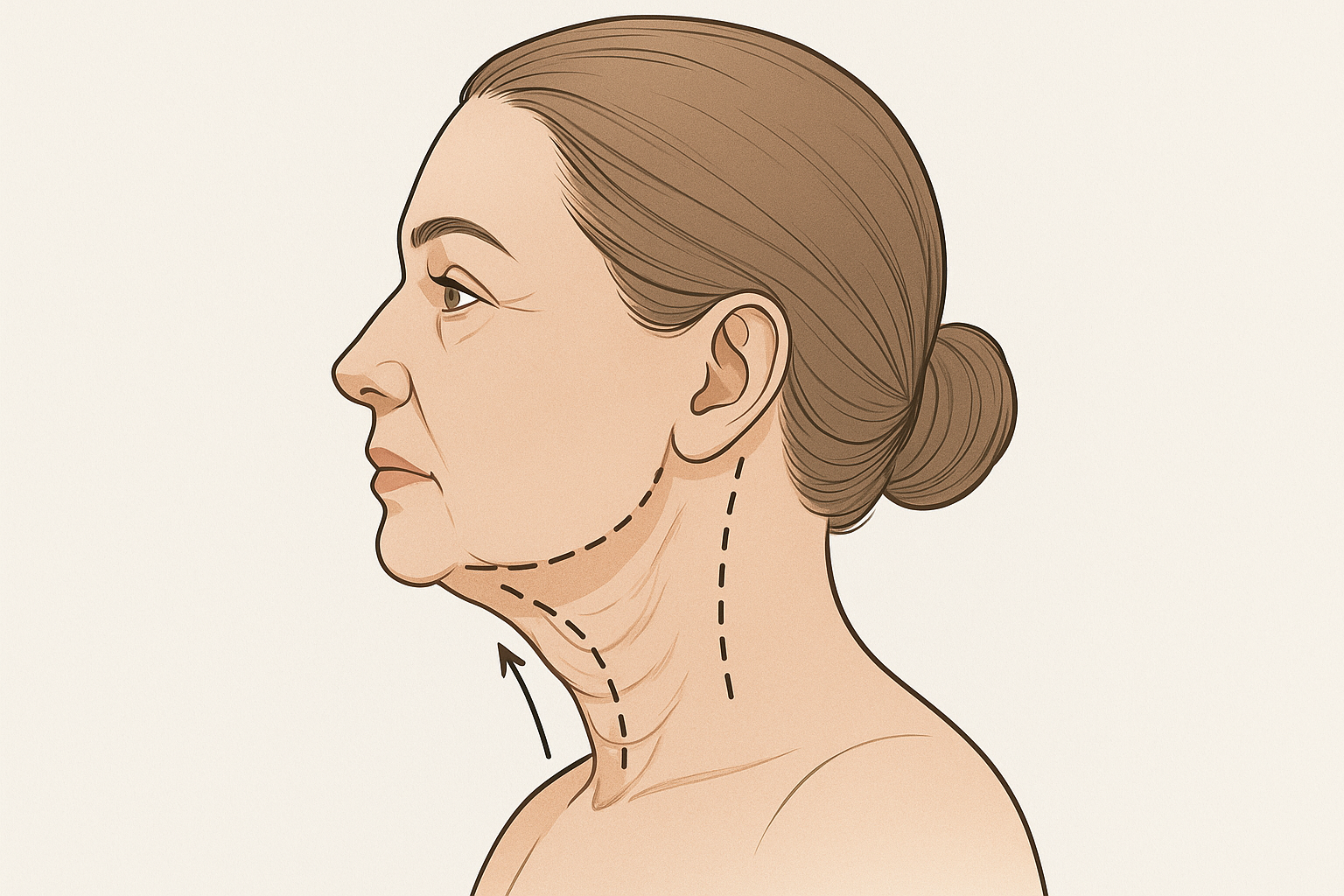
Why do different neck lift techniques exist?
For a general overview of the procedure, you may also review my service page: Neck Lift.
Traditional Neck Lift
Incisions: Fine incisions usually follow natural creases around and behind the ear. When needed, a small submental incision under the chin may be added to refine the central neck.
Layers addressed: Skin redraping and removal of excess; contouring of subcutaneous and, when indicated, deeper fat; platysma management to support a smoother neck contour.
Typical candidates: Pronounced skin excess, visible platysmal banding, and loss of neck–jawline definition.
Recovery & durability: Social downtime typically ~10–14 days. Scars are placed within natural folds. Results are designed to be long-lasting when deeper support is restored.
Mini (Short-Scar) Neck Lift
Incisions: Shorter, more limited incisions, often focused anterior to the ear. A submental incision is not always required.
Layers addressed: Primarily skin and superficial tissues with selective tightening. Deep platysma work is limited compared to the traditional or deep approach.
Typical candidates: Early laxity, mild contour changes, and patients prioritizing a shorter recovery.
Recovery & durability: Social downtime may be ~5–7 days. Improvements are meaningful for selected cases; however, in advanced laxity, a mini lift may be insufficient as a stand-alone solution.
Deep Neck Lift
Incisions: Similar to the traditional approach (around/behind the ear) and frequently combined with a small submental incision to access the central neck safely.
Layers addressed: Deep-plane contouring focuses on the central neck framework—subplatysmal fat, digastric/ submandibular region as indicated—and platysmaplasty to restore the muscular sling. The aim is a more stable, natural transition from under-chin to neckline.
Typical candidates: Fullness beneath the platysma, prominent banding, or “double chin” appearance not fully explained by superficial fat alone.
Recovery & durability: Social downtime commonly ~10–14 days. Because supportive anatomy is rebalanced in the deep plane, results are designed for durability with a natural appearance.
Quick Comparison
| Technique | Incisions | Layers | Typical Downtime | Result Longevity |
|---|---|---|---|---|
| Traditional | Around/behind ear ± under-chin | Skin, fat, platysma | ~10–14 days | Long-lasting |
| Mini (Short-Scar) | Shorter, ear-focused | Skin, superficial tissues | ~5–7 days | Moderate (case-dependent) |
| Deep | Ear pattern ± under-chin | Deep plane, platysma, subplatysmal fat | ~10–14 days | Long-lasting, natural |
Which technique is appropriate?
Technique selection relies on an in-person examination: skin quality, pattern of fat (superficial vs. deeper), and platysma status. I build a plan that aligns anatomy with realistic goals. When indicated, a neck lift can be combined with facial procedures discussed during consultation to achieve balanced rejuvenation.
